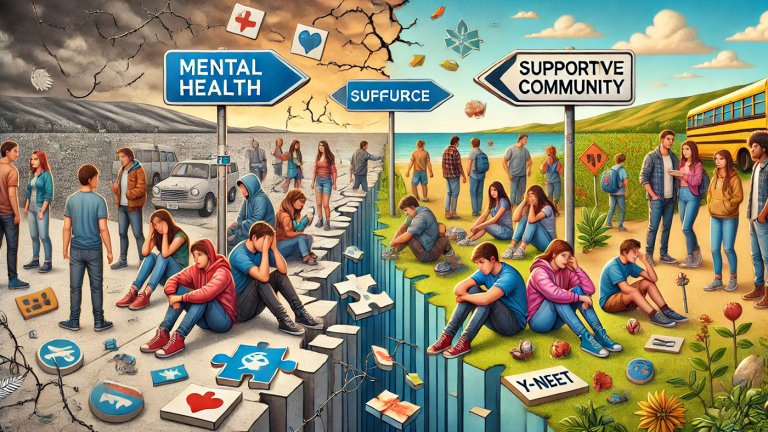Lockdown Life 2: Thinking Traps
There are various factors which are beyond our control during this COVID-19 pandemic and the appended lockdown, but what we do have a large degree of control over is how we think. This brings us quite naturally to the therapeutic modality with the greatest emphasis on understanding and changing our thought processes: Cognitive Behavioural Therapy. If you are struggling at present, or in general, please bear with us as we cover various useful CBT principles and techniques in this series of articles.
After the ABC model and the three tiers of belief (automatic thoughts, intermediate beliefs and core beliefs), one of the most important parts of CBT theory is a group of irrational and dysfunctional thinking styles known as cognitive distortions and referred to colloquially as “thinking traps”. Thinking traps tend to result from underlying beliefs, but they can also be used to categorize them; dysfunctional, maladaptive or irrational beliefs can themselves be thinking traps, but they can also cause thinking traps. This will become clearer when we explain what thinking traps are and the different forms they take.
Imagine that you are made redundant from your present occupation and are met with the following thought: “Now that I have no job I am going to lose my house and my entire life is going to be ruined". This particular thought is a mixture of (at least) two different thinking traps; fortune-telling and catastrophizing. Fortune telling is when an individual (or, perhaps more accurately, one of their beliefs or thoughts) makes unfounded assumptions about the future. How could you possibly know that you are going to lose your house or that your life will collapse as a result of losing your job? You might get a new job, a job which pays better than the last one and fulfils you more. You might be able to access some kind of financial assistance, be it from a family member or an organisation. You might, in other words, be favoured by fate in the greater scheme of things.
This thought also qualifies as catastrophizing for similar reasons; you are taking the facts, the fact that you have lost your job, and following them to a particularly disastrous conclusion that isn’t in evidence. There is no reason to believe, at least in this example, that you are going to lose your house or that your life will be “ruined”. What has likely happened is that underlying beliefs have either caused this irrational thought directly or caused a sharp emotional response, possibly anxiety, which has then tainted your ability to think rationally and caused you to believe in one of the worst imaginable outcomes. This highlights the ABC model’s circular, rather than linear, nature (this will be properly explained in the following article). Thoughts colour emotions, which cause behaviours and physiological responses (muscle tension, sweating, etc.), which then, in turn, influence thoughts, causing the cycle to start again. Alternatively, thoughts can also colour emotions which can then taint other thoughts. An anxious person is much more likely to envision a disastrous imaginary scenario than a calm person, just as an angry person is much more likely to view disagreement or criticism as a personal attack. It is important to understand that multiple thinking traps can be active at once and some converge naturally (such as mind-reading and personalisation, both of which involve making assumptions about another person’s thoughts).
Other thinking traps include (presented in alphabetical order for ease of use):
Black-and-white thinking: This can also be aptly referred to as “all-or-nothing thinking”, meaning that you tend to think in absolutes; if something isn’t perfect it is worthless, and if a person, including yourself, makes a mistake then they are condemnable. There are no shades of grey in black as far as black and white thinking is concerned, there is only good and bad, worthless and invaluable, hopelessly broken and incomparably perfect. Because nothing is perfect what tends to happen with black and white thinking is that you constantly condemn and devalue yourself (or others, or even existence itself). Trying is failing (unless you completely succeed) and learning is useless or at least extremely stressful (because your performance is imperfect as you learn).
Shoulds: This thinking trap is best understood as the use of forceful “must”, “should” and “have to” statements. They are rigid and arbitrary demands placed upon oneself, others or the world itself which aren’t realistic or practical. Often, when they are aimed at yourself, they demand an impossible standard from you which then leads you to feel like a failure when you inevitably fail to meet those impossible standards (they are comparable to black-and-white thoughts in that regard).
Emotional-reasoning: Perhaps the simplest of the thinking traps to explain. Emotional-reasoning is when you believe something because it “feels” like it is true. As you can imagine, this is a particularly problematic thinking trap for those who are often afflicted with bouts of anxiety or depression.
Filtering: You filter out and ignore memories and other evidence which disputes a belief but notice most if not all information which affirms that belief. A person applying a mental filter to the belief that nobody loves them will recall the icy interpersonal conflicts they were met with during the day but will ignore or downplay the times when they were met with warm reactions such as kindness and patience.
Magnifying/minimising: You exaggerate the severity or frequency of negative events and/or are preoccupied with them while you tend to do the opposite with positive events; they are ignored or downplayed. Alternatively, this thinking trap can take the same approach to specific events; meaning you may exaggerate negative aspects of a situation while downplaying the positive ones.
Mind-reading: You make assumptions about what another person is thinking, generally something undesirable about you, which you couldn’t actually know. You assume that they are upset at you if they see you but walk past you without saying hello. Realistically, however, they might just be preoccupied or upset about something else; there are a horde of alternate explanations which you don’t consider. In this sense, mind-reading can also mix with catastrophizing if you assume that the other person is thinking something about you which will result in some kind of catastrophic outcome. Remember, experiencing these thinking traps is not worth condemning yourself for; thinking traps are an inevitable by-product of human life.
Overgeneralizing: This is when you take an isolated event, or maybe several of them, and form them into a firm belief about all such events. For example, if you have a particularly disastrous date you might decide that all your dates will go poorly because you’re terrible at dating.
Personalising: You assume that other people’s behaviours (especially those which you interpret as negative) are directed at you, and/or are reactions to your presence or something you have done, in the absence of evidence for that belief (or by interpreting the evidence in a narrow way which leads to one negative conclusion and not the other equally or more likely neutral or positive alternatives).
The above is not an exhaustive list but it does include the most common thinking traps. You can gain more peace and control over yourself simply by becoming more aware of these thinking traps; by watching the internal workings of your mind and questioning instead of just accepting your own thoughts. Ultimately, any thought which is irrational and therefore maladaptive and dysfunctional is likely some kind of thinking trap. Categorizing such thoughts is useful but not essential. Irrational thoughts can be addressed without necessarily being labelled and categorized as thinking traps, but the labelling and categorization process can make them easier to manage and address, just as it is easier to manage and address an illness once it has been diagnosed and defined. Also just like an illness, certain prescriptions, certain techniques work better on certain thinking traps. In this article, we will introduce only one such prescription in simple terms; disputation.
Disputation is, in effect, the individual disagreeing with their thought(s) in a structured and logical way. Disputation is usually a prolonged and repetitive process. Beliefs and thoughts are shaped within us through many years of experience and affirmation. Although it doesn’t take years to deprogram these beliefs and thoughts, it still requires effort and patience. Think of it like losing weight. Obesity tends to be a lifetime in the making; various mental and physiological factors all entwine over many years and eventually culminate in the state of being we refer to as “obesity.” Reversing this process, losing weight and becoming fitter and healthier is an endeavour which takes time and effort, but it can be achieved within a much shorter period of time than it took to develop. The same goes for thinking traps and the networks of irrational beliefs that we plant and water within ourselves as we grow; they are not easily reversed but we can make progress relatively quickly if we commit ourselves to personal transformation. The first step forward in that process, the initial burst of commitment, comes from awareness, the kind of awareness we are building within ourselves as we discuss this subject matter.
One of the greatest roles of that awareness, as it relates to thinking traps in particular, becomes evident when we examine the notion of a “self-fulfilling prophecy”. In psychology, a self-fulfilling prophecy is a belief that makes itself come true. If you, for example, believe that you are a failure and won’t ever succeed at anything (a potential mixture of overgeneralizing, black-and-white-thinking and filtering, to name but three possibilities) then you are likely to avoid opportunities to succeed. If you do take on such an opportunity you are likely to feel incompetent and undeserving of success which will, accordingly, cripple you and drastically increase your chances of failure. This is a self-fulfilling prophecy because the belief in question has willed itself into existence, it has caused itself to come true. Thinking traps often operate in this way. Another example might come from a belief that other people won't like you, that you are unlovable (another potential mixture of overgeneralizing, black-and-white thinking and filtering, among others). If you believe this then you are unlikely to try to get to know new people or to socialise with people you already know; this behaviour may also cause others to think you are arrogant or don’t like them. Accordingly, they may ignore you or respond to you negatively which is likely to reinforce the initial belief as well as making it come true. This can be a cyclical process in which thinking traps fulfil themselves, and that self-fulfilling prophecy then further “proves” the thinking trap to you, causing it to become more real and more difficult to dispute. The good news is that it is never too late to choose awareness and change over thinking traps and self-fulfilling prophecies. It takes time and it takes effort, but it is worth it. What is worth more to you than the quality of your own experience and the contribution you make to others and the world around you? Thinking traps prevent us from thinking, feeling and behaving as we truly want to; only by conquering them are we able to truly become ourselves and share ourselves with others.
As with the first article, this one aims to introduce readers to a major core component of cognitive behaviour therapy theory. The first article aimed to outline the ABC model and the three underlying levels of cognition, while this one has explained thinking traps. In the next, we will properly explore the cyclical relationship between thoughts/beliefs, emotions, behaviours and physiological reactions, and tentatively move toward the disputation process.
This lockdown has been and will continue to be difficult for many but we are swiftly approaching the part of this series where useful techniques can be shared and explored in a way readers will understand and benefit from. From relaxation exercises to practices designed to change beliefs and thoughts; they’re all on their way if you stick with us.






